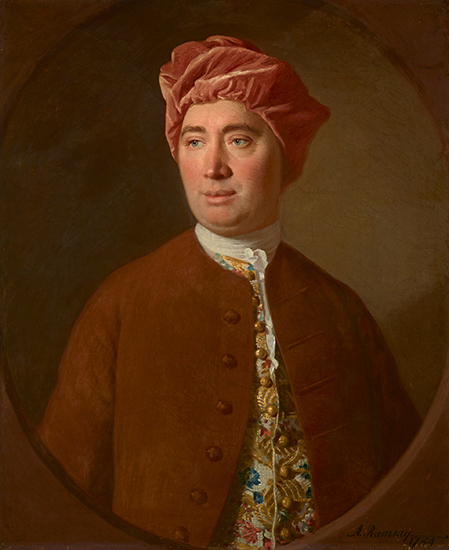20.4 A Standard Scots

A brief history of Scots and its Anglicisation
“Scots is descended from a form of Anglo-Saxon, brought to the south east of what is now Scotland around AD 600 by the Angles […]. English is also descended from the language of these peoples. […] From 1494 it came to be known as 'scottis' and in this, the Stewart period, it began to develop a written standard, just at the time when the East-Midland dialect of English was becoming the basis for a written standard in Tudor England. It was the vehicle for the works of the great late-medieval makars (poets) like William Dunbar, Gavin Douglas and David Lindsay. […]
After the Scottish Reformation (1560), the Triple Monarchy (1603) and the political Union with England (1707), English gradually became the language of most formal speech and writing and Scots came to be regarded as a 'group of dialects' rather than a 'language'. It continued, however, to be the everyday medium of communication for the vast majority of Lowland Scots, and was used creatively in poetry, song and story. It reached its pinnacle of literary achievement in this period in the work of men such as Robert Fergusson and Robert Burns. […]
The number of Scots speakers probably reached its height in the course of the 19th century, but the lack of a standard, and an insistence after 1845 that children be made to speak English in the schools, often to the exclusion of Scots, did not help the situation. At present Scots is primarily a spoken language, with a number of regional varieties, each with a distinctive character of its own, and is heard widely in most parts of the country.”
Whilst the expository mode and formal registers of written Scots were quite quickly displaced with Standard English, with the notable exception of legal and political Scots words, spoken Scots Standard English would have taken longer to be established. Key enlightenment figures bemoaned the poor standard of their spoken English language whilst being celebrated literati, as the example from David Hume’s letters testifies:
“Is it not strange that, at a time when we have lost our Princes, our Parliaments, our independent Government, even the Presence of our chief Nobility, are unhappy, in our Accent & Pronunciation, speak a very corrupt Dialect of the Tongue which we make use of; is it not strange, I say, that, in these Circumstances, we shou'd really be the People most distinguish'd for Literature in Europe?” (Hume, 1932, p.255).
Spoken Scots, of course, continues to this day but with no popularly agreed standard exemplar such as Scottish Standard English towards which speakers can converge. Written Scots continued in a literary or narrative mode in prose fiction, eventually mostly residing in reported speech as you learned in Unit 19. In addition, poetry, personal letters, song, cartooning, theatre, and planned performative speech all have maintained a continuity of Scots, and also certain aspects of journalism, aspects which have featured in various units throughout this course.
Scots being conceptualised as “a very corrupt dialect [of English]” (Hume, 1932, p.255) through the period of the last 450 years led to much conscious and unconscious 'correction' of the written form, particularly in its grammar. This in turn resulted in the influence of Standard English on even avowedly Scots writing. This can be seen in the standard English grammatical words being employed widely, such as 'to' over 'tae', 'you' over 'ye'. A popular example of these developments is Burns' Scots Wha Hae [Tip: hold Ctrl and click a link to open it in a new tab. (Hide tip)] , where in authentic Scots 'wha' ought to be kept only as the interrogative, and the title in more authentic Scots would read Scots Thit Hae.
And so, things continued with each generation producing writing expecting it would be for the last speakers of Scots, a sentiment which is vividly expressed in Robert Louis Stevenson's ‘The Maker to Posterity’:
“Few spak it then, an’ noo there’s nane.
My puir auld sangs lie a’ their lane,
Their sense, that aince was braw an’ plain,
Tint a’thegether,
Like runes upon a standin’ stane
Amang the heather.”
Each generation of writers noticed and documented the generational changes down to language shift, yet perhaps did not detect the extent to which the Scots language was continuing to be transmitted and to innovate. The fear of losing the Scots language, as for example expressed by Stevenson, has been met with various revivalist movements, often with much support coming from those most removed from the spoken language. This includes the work of Allan Ramsay in the 17th-18th century, of Robert Burns in the second half of the 18th century, of Scott and Hogg into the 19th century, and of Robert Louis Stevenson towards the 20th century, as well as of Violet Jacob into the 20th century.
Then, there was the literary movement the Scots Renaissance from the early to the mid-20th century, which can be conceptualised as the Scottish version of modernism. One observation is that with a constant look to revivalism written Scots and spoken Scots began to diverge. This is a particular ‘accusation’ levelled at the Lallans movement and the “synthetic Scots” championed by Hugh MacDiarmid. This “synthetic” style of written Scots allows words and linguistic features to flow across constraints of time and geographical location within the literature. “Synthetic” in this context meaning a bringing together, and here it is unfortunate that the word “synthetic” took on the artificial connotations of the products of the late 20th century petrochemical industry with added many negative connotations.
With national communication primarily being carried out in written Standard English, Scots became conceptualised in terms of its dialects. It wasn't until the invention of broadcast media that spoken Standard Scottish English or Standard English entered the home, although the reach of schools and universities had already extended there for quite some time. Famously, Lord Reith as director general of the BBC established a spoken standard for public broadcast which sought to eradicate local varieties. The 20th century also saw the rise of improvisational speech in telephony and radio communication.
During the late 20th century prescriptive grammars very much fell out of favour world wide, and whilst figures in the Scottish cultural Renaissance produced significant works of international importance in literary Scots, popular works tended to be in Scots viewed as a dialect of English, neither working towards nor seeking a standard form.
With these new technologies came new rhetorical modes, registers and conventions of speech, and Scots language has very much been a part of that. At the end of the 20th century digital communication has emerged with written Scots being ubiquitous in email, SMS messaging, message boards, chat rooms, and websites; and now with the new social media platforms micro-blogging, online newspapers, e-books, podcasting & vlogging, written and spoken Scots is part of most Scots speakers’ daily media diet. This is being heralded as a new resurgence of the language, being aired in public in a way heretofore unseen.
There has been no standard for this kind of written work, most people being autodidacts, and thus it employs a mixture of traditional spellings and phonetic spellings, using English spelling conventions, and a mixture of standard English grammar and intuited Scots grammar. The use of Scots language in social media is being more and more recognised. This can be seen, for example, in the fact that Twitter established a Scottish Twitter visitor centre as part of the Edinburgh Fringe Festival in 2019. This exhibition reflects that many consider
“Scottish Twitter […as] arguably the nation's finest export, and largely consists of sweary jokes in Scots that are shared online, mainly on the r/ScottishPeopleTwitter subreddit. Scottish Twitter came to prominence after BuzzFeed UK's Luke Bailey spent about a year collecting weird tweets, which he then unleashed upon the world in August 2015 in an article titled "35 Reasons Scottish Twitter Is The Wildest Place On The Internet.”
This initiative reflects what you learned about in various units, namely that often Scots is used for and cherished as a medium to express humour. An example is the winning tweet of the 2019 exhibition by @marcsimps0n:
“wis walkin home n someone threw a block of cheese oot their windee n it hit me on the head, i turned n shouted that wisna very mature wis it”
Yet Scots is not only used to express humour in social media online. The Scots Language Forum group on Facebook with over 5400 members, is an example of social media use that goes far beyond the Twitter example above. This group shares resources, information on events and interestingly discusses the use of Scots language and meaning of Scots vocabulary in context in the different dialect areas. People in this group write in English as well as In Scots, or a mix of both. There are more examples of such groups with a more localised focus, such as the Shetland Scots Facebook group Wir Midder Tongue started by Shetland Scots speakers. The group describe their purposes as:
“Keepin’ da Shetlan’ dialect alive bi encouragin’ fok no oanly ta spaek in wir native tongue, bit ta write in it... sharin’ stories, poems, sangs, sayin’s, guddicks... introducin’ wir dialect ta fok unfamiliar wi it…”
Activity 11
You will conclude your study of section 20.4 with this activity, in which you will engage with written Scots and written Standard English. You will be bringing together what you have learned in different units of this course here, your skills at using the DSL, understanding local varieties of Scots, the links between Scots and Standard English and the links between written and spoken Scots. For these purposes you will be working with a well-known example of poetry in the Scots language, Robert Burns’ ‘’The Deil's Awa Wi The Exciseman’ (1792). Burns, who was employed as an Exciseman himself from 1789–1796, wrote this humorous song from the perspective of a community who revel in the absence of the loathed Exciseman and defiantly reject governmental regulation that would normally be imposed by him.
Part 1
First of all, work with the spoken version of the lyrics of this song. Listen to the recording and try to follow the spoken Scots understanding the meaning of the words and the song as a whole. Then, using the transcript, read the lyrics of the song, recording yourself as you do so and compare your version with our model.
Transcript
Listen
The Deil's Awa Wi The Exciseman
The deil cam fiddlin thro the toun,
An danc'd awa wi th' Exciseman,
An ilka wife cries, "Auld Mahoun,
A weish ye luck o the prize, man."
Chorus-
The deil's awa, the deil's awa,
The deil's awa wi the Exciseman,
He's danc'd awa, he's danc'd awa,
He's danc'd awa wi th' Exciseman.
We'll mak oor maut, an we'll brew oor drink,
We'll laugh, sing, an rejoice, man,
An mony braw thanks tae the meikle black deil,
Thit danc'd awa wi th' Exciseman.
The deil's awa, &c.
There's threesome reels, there's foursome reels,
There's hornpipes an strathspeys, man,
But the ae best dance ere came to the laun
Wis-the deil's awa wi the Exciseman.
The deil's awa, &c.
Model
The Deil's Awa Wi The Exciseman
The deil cam fiddlin thro the toun,
An danc'd awa wi th' Exciseman,
An ilka wife cries, "Auld Mahoun,
A weish ye luck o the prize, man."
Chorus-
The deil's awa, the deil's awa,
The deil's awa wi the Exciseman,
He's danc'd awa, he's danc'd awa,
He's danc'd awa wi th' Exciseman.
We'll mak oor maut, an we'll brew oor drink,
We'll laugh, sing, an rejoice, man,
An mony braw thanks tae the meikle black deil,
Thit danc'd awa wi th' Exciseman.
The deil's awa, &c.
There's threesome reels, there's foursome reels,
There's hornpipes an strathspeys, man,
But the ae best dance ere came to the laun
Wis-the deil's awa wi the Exciseman.
The deil's awa, &c.
The creation of Scottish Standard English (SSE)
